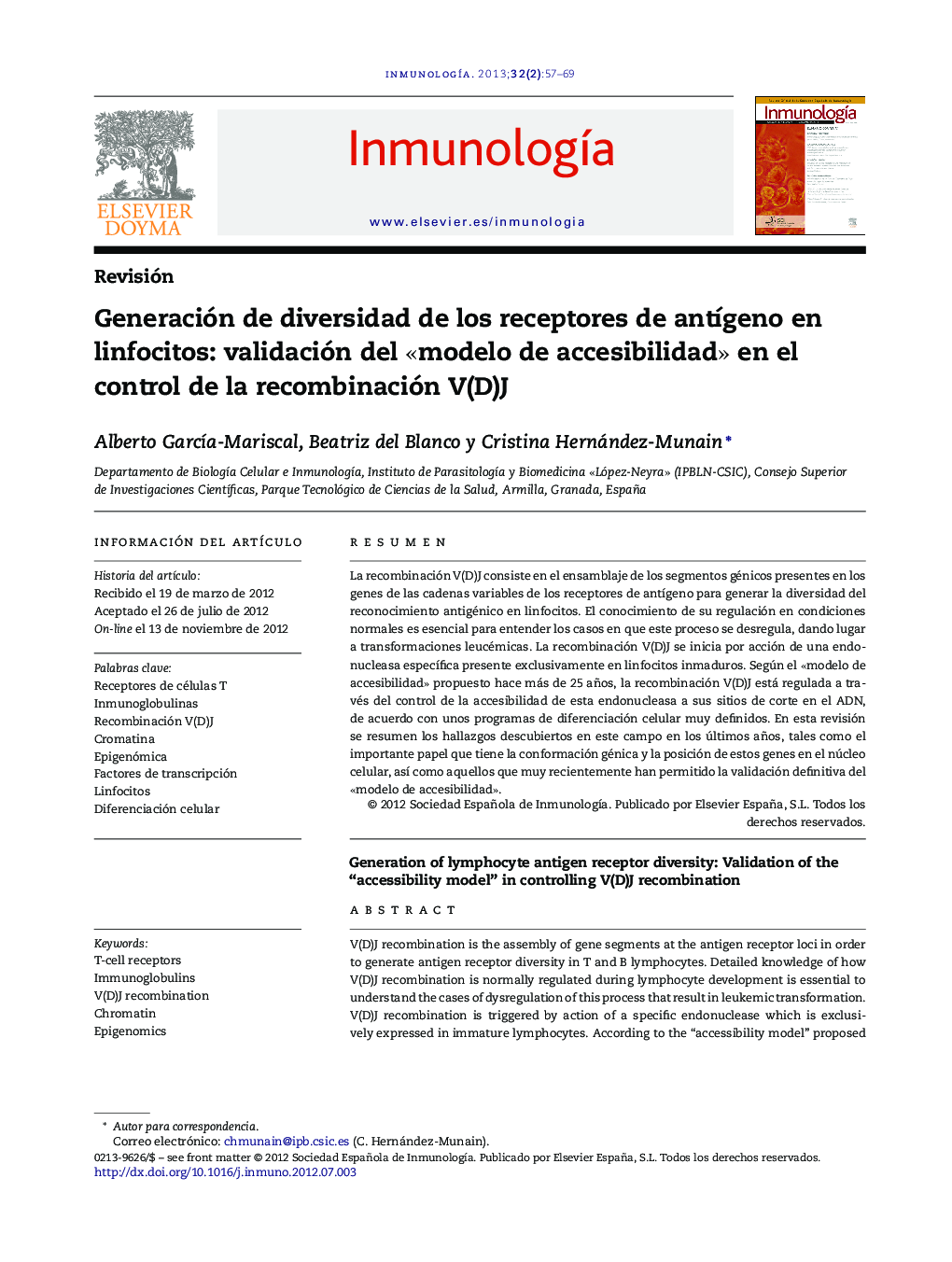| Article ID | Journal | Published Year | Pages | File Type |
|---|---|---|---|---|
| 3358150 | Inmunología | 2013 | 13 Pages |
Abstract
V(D)J recombination is the assembly of gene segments at the antigen receptor loci in order to generate antigen receptor diversity in T and B lymphocytes. Detailed knowledge of how V(D)J recombination is normally regulated during lymphocyte development is essential to understand the cases of dysregulation of this process that result in leukemic transformation. V(D)J recombination is triggered by action of a specific endonuclease which is exclusively expressed in immature lymphocytes. According to the “accessibility model” proposed more than 25 years ago, DNA cleavage by this endonuclease is very strictly controlled during cell differentiation by regulating its accessibility to chromatin. This review summarizes the advances in the field over the last few years, including the important role of the genomic conformation and position of the antigen receptor loci within the nucleus, as well as those that have recently culminated with the validation of the “accessibility model” to control this process.
Keywords
Related Topics
Life Sciences
Immunology and Microbiology
Immunology
Authors
Alberto GarcÃa-Mariscal, Beatriz del Blanco, Cristina Hernández-Munain,
